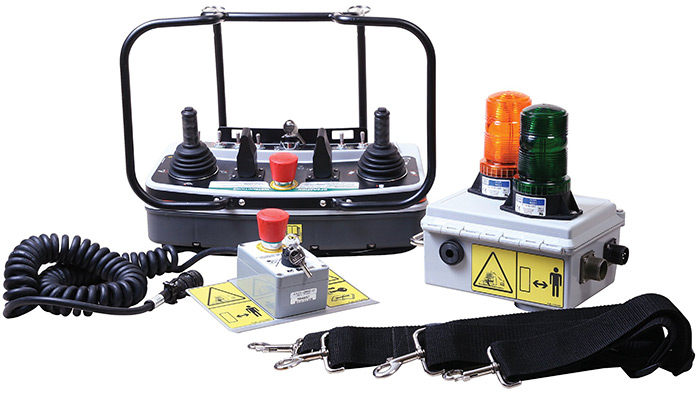
Addressing Operator Preferences in Compact Loader Controls
Shortages in skilled labor in the construction industry point to the need for customizing skid steer and compact track loaders to match operators’ preferences. One of the most common methods of improving operator comfort and reducing operator fatigue is improving compact loader control options.
Traditionally, standard hand levers and foot pedals have been the preferred setup for skid steer and compact track loader operators. As the median age of workers in the overall construction sector reaches 42—according to data for residential and nonresidential construction provided by the United States Census Bureau—there is an increased demand for machines that are easier to operate.
At the same time, the aging workforce is coupled with young operators who prefer wrist and hand movements with joystick controls instead of the traditional loader mechanical systems.
Most skid steer and compact track loader manufacturers offer more than one style of control system to meet the growing demand for operator preferences. The three styles of systems available today for skid steer and compact track loaders include the following:
- Standard manual controls
- H-pattern controls
- ISO joystick controls
With the press of a button inside the compact loader cab, the operator can switch from one style to another.
Standard controls remain popular today among operators working in construction. The mechanical control systems with multiple linkages are preferred by many older operators because they were trained on them and have used them throughout their careers. With standard compact loader controls, each steering lever controls each drive side independently. Dual foot pedals control the skid steer or compact track loader’s hydraulic lift and tilt functions. However, at the end of a long workday, the operator’s arms may be especially tired because of the movements associated with standard controls.
H-Pattern Controls
H-pattern controls are an option for fleet owners with operators who prefer hand controls. Left and right steering levers have handles that pivot right and left for easy operation and less operator fatigue. The left handle controls the lift arms.
Operators move it left to raise the lift arms and right to lower them. The right handle controls attachment tilt. Move it right to dump a bucket or tilt an attachment forward. Move it left to curl the attachment back. Some compact equipment manufacturers give operators the option to choose between controlling lift and tilt functions by hand or by foot. Operators can use traditional hand and foot controls or press a button to switch to H-pattern hand controls. Both loader control styles provide sensitive, precise control of all loader functions.
ISO-Pattern Joystick Controls
A second loader control option that is becoming increasingly popular with the addition of younger skid steer and compact track loader operators is ISO-pattern joystick controls.
The electronic joysticks offer low-effort hand control of all machine workgroup functions. Operators can make more comfortable hand and wrist movements to perform routine loader functions. At the end of a long workday, operators are more likely to be as fatigued if they use joystick controls rather than standard controls.
In the ISO pattern, the left joystick controls drive functions, while the right joystick controls lift and tilt functions. In the H-pattern, forward and backward movement of the left joystick controls the loader’s left-side drive, while side-to-side movement controls lift. Forward and backward movement of the right joystick controls the loader’s right-side drive, while side-to-side movement controls tilt.
Joysticks Expand Loader Functions
Joystick controls give skid steer and compact track loader operators access to more functions that increase productivity and accuracy. Some compact loaders equipped with ISO joystick controls offer the following features:
- Adjust the loader’s drive system for maximum pushing and digging power.
- Maneuver the skid steer or compact track loader at slower travel speeds for more precise attachment operation and less effort.
- Change how responsive the loader’s drive and steering systems are when the operator moves the joysticks.
- Operators have the ability to set specific throttle positions.
- Features, such as normal- and high-range travel speed (if equipped); auxiliary hydraulic functions; optional horn and turn signals; and lift-arm float control at the operator’s fingertips.
Before purchasing your next skid steer or compact track loader, be sure to discuss the available control patterns. This allows operators to choose their preferred style—which may increase their productivity and reduce their fatigue.
Operate Remotely

Some work environments call for operating skid steer and compact track loaders remotely. An optional radio remote control system takes the operator out of an environment for improved satisfaction. This may be a demolition project or a company that unloads barges in hot, humid environments that are not ideal for operators.
A radio remote control system allows the operator to start the loader engine and operate the drive, lift, tilt and auxiliary hydraulic functions using a radio remote control transmitter. However, the radio remote control system is not approved for certain types of hazardous or explosive environments.
